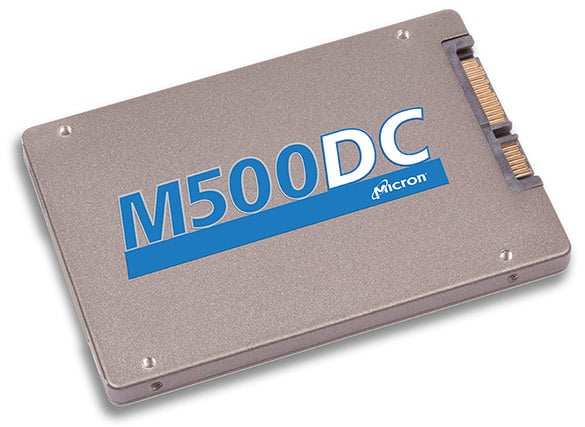Micron M500DC Enterprise Class SSD Review
Introduction and Specifications
Despite being limited by the capabilities of the SATA interface, many solid state drive manufacturers continue to innovate and introduce new products that improve on previous generation products. For example, Micron recently released its M550 series of drives, which was an evolution of the previously released M500 series, but built around newer, 20nm NAND flash memory and featuring enhanced/updated firmware. The M550 proved to be an excellent all around performer, outpacing many competing products in a number of tests, but again, operating within the limitations of its SATA interface.
Today, Micron is at it again, though the drives we’ll be showing you here are targeted at a different audience. The new Micron M500DC series of drives are designed for enterprise/data center type workloads and strike a balance between performance and endurance. We’ve got a couple of the drives on hand, in 800GB and 480GB flavors—full specs are below, followed by an array of benchmarks versus a handful of other drives in the same class...

The New Micron M500DC Enterprise-Class Solid State Drive
|

Find Micron SSDs at Amazon here, starting at $99.
Externally, there isn’t really much to see on the Micron M500DC drives we received for testing. As you’d expect, the M500DC looks just like the vast majority of other 2.5” solid state drives currently on the market (though, 1.8” models are also coming). It has a slim, 7mm Z-Height, and is adorned with a single decal listing the model number and some other identifying information, but other than that, it looks like any other SSD. These early samples don’t even have any stylized branding.
Open up the Micron M500DC and you’ll find that the drive is built around the tried-and-true Marvell 9187 controller, which has been employed by a number of other manufacturers, and that it sports a bit of Micron DRAM cache as well (1GB in the 800GB drive). This particular drive is an 800GB model, but it’s outfitted with 1024GB of total NAND. The unallocated capacity is used for wear leveling and other maintenance routines (the lower capacity drives are also over-provisioned, though the 480GB drive we tested is outfitted with 768GB of NAND). Micron rates these drives for 2 fills/day for 5 years, so endurance is competitive with competing products in this class.
The actual flash memory in this drive is custom 20nm MLC NAND that is not being offered to other drive manufacturers at this time. Details were scarce on what exactly makes this NAND different than what Micron offers to its customers, but we’re told it was designed for longevity and endurance and that it’s the “best of the best” bin. According to Micron, the M500DC takes full advantage of Micron’s vertical integration with XPERT and a custom MLC NAND device targeted specifically for enterprise SSD products. These NAND devices are built using a 20nm process and will not be sold to the open market—it will only be available in Micron SSDs.
What the pictures don’t show are some of the proprietary technologies Micron has incorporated into the M500DC, including RAIN (Redundant Array of Independent NAND), Adaptive Read Management/Optimized Read (ARM/OR), and DataSAFE, which fall under the umbrella of Micron’s extended performance and enhanced reliability technology, or XPERT. The drive also offers power loss protection, thanks to the bank of capacitors visible in the pics above.
RAIN can be considered somewhat of a RAID 5-type solution that works across the flash channels in the drive. With RAIN, the M500DC can recover lost data beyond page, block, and die-level failures. Adaptive Read Management / Optimized Read (ARM/OR) uses custom DSP algorithms implemented in firmware to optimize NAND read locations to deal with issues that affect the accuracy and endurance of a cell over time. Enterprise data path protection is a protection scheme that ensures all data within the drive is transferred correctly through the various SSD structures, including the drive interface, DRAM cache, all error checkers, etc. To further protect data, the M500DC is also outfitted with Physical Power-Loss Protection. The drive sports an array of capacitors that can provide enough power for the drive to commit all pending write commands in the event of a power failure.









